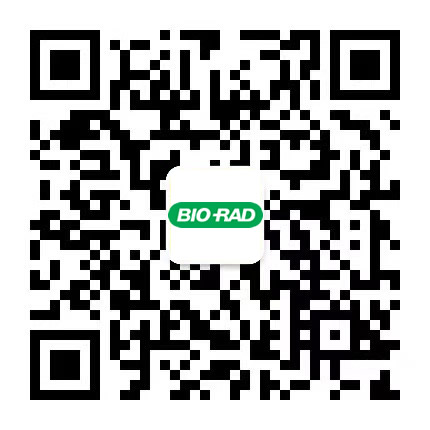CD281 (TLR1) Monoclonal Antibody (GD2.F4), Functional Grade, eBioscience™/CD281 (TLR1) 单克隆 (GD2.F4), 功能抗体, eBioscience™
货号:16-9911-82,16-9911-38,16-9911-050,16-9911-025
规格:100 µg,5 mg,50 mg,25 mg
价格:3274,24089,120443,72266
产品类型:流式抗体
品牌:eBioscience
抗原:CD281 (TLR1)
物种:人
宿主:小鼠
抗体亚型:IgG1, kappa
克隆号:GD2.F4
荧光染料:其它
_ueditor_page_break_tag_
类型: | 一抗(功能抗体) | 同型对照: | Mouse IgG1 kappa Isotype Control (P3.6.2.8.1), Functional Grade, eBioscience™ |
浓度: | 1 mg/mL | 用法: | 1 µg/test(Flow);Assay-Dependent(功能检测);Assay-Dependent(对照测) |
产品详细信息Description: The GD2.F4 antibody reacts with human Toll-like receptor 1 (TLR1). TLR1 is expressed in low numbers on the surface of peripheral blood monocytes and even lower numbers on dendritic cells. A very high degree of donor variability has been reported for TLR1 expression. eBioscience manufactured GD2.F4 mAb has been tested by flow cytometry, in parallel with a sample from the developer using cells from healthy donors. eBioscience and the reference antibody gave similar results: donors tested confirmed low levels expression of TLR1 on PBMC (less than 1/4 log shift). While the ligand and exact function of TLR1 are not defined yet, it has been suggested that TLR1 may cooperate with TLR2 in response to certain antagonists. Despite low levels of surface expression as detected by flow cytometric analysis, TLRs are efficient signal transducing molecules in monocytes and dendritic cells. To date, at least ten members of the Toll family have been identified in human. This family of type I transmembrane proteins is characterized by an extracellular domain with leucine-rich repeats and a cytoplasmic domain with homology to the type I IL-1 receptor. Two of these receptors, TLR2 and TLR4, are pattern recognition receptors and signaling molecules in response to bacterial lipoproteins and have been implicated in innate immunity and inflammation.Applications Reported: The GD2.F4 antibody has been reported for use in flow cytometric analysis. To date, inhibition of function has not been reported.Applications Tested: The GD2.F4 antibody has been tested by flow cytometric analysis of normal human peripheral blood cells. This can be used at less than or equal to 1 µg per test. A test is defined as the amount (µg) of antibody that will stain a cell sample in a final volume of 100 µL. Cell number should be determined empirically but can range from 10^5 to 10^8 cells/test. It is recommended that the antibody be carefully titrated for optimal performance in the assay of interest.Storage and handling: Use in a sterile environment.Filtration: 0.2 µm post-manufacturing filtered.Purity: Greater than 90%, as determined by SDS-PAGE.Endotoxin Level: Less than 0.001 ng/µg antibody, as determined by LAL assay.Aggregation: Less than 10%, as determined by HPLC.靶标信息TLR1 protein is a member of the Toll-like receptor (TLR) family which plays a fundamental role in pathogen recognition and activation of innate immunity. TLRs are highly conserved from Drosophila to humans and share structural and functional similarities. They recognize pathogen-associated molecular patterns (PAMPs) that are expressed on infectious agents, and mediate the production of cytokines necessary for the development of effective immunity. The various TLRs exhibit different patterns of expression. The Toll-like receptor (TLR) family in mammals are comprised of a family of transmembrane proteins characterized by multiple copies of leucine rich repeats in the extracellular domain and an IL-1 receptor motif in the cytoplasmic domain. The TLRs could constitute an important and unrecognized component of innate immunity in humans. In mice, TLR1 interacts with TLR2 and co-expression of TLR1 and TLR2 enhance the NF-kappaB activation in response to a synthetic lipopeptide. They recognize the lipid configuration of the native mycobacterial lipoprotein as well as several tri-acylated lipopeptides. Different length transcripts presumably resulting from use of alternative polyadenylation site, and/or from alternative splicing, have been noted for the TLR1 gene.仅用于科研。不用于诊断过程。
数据 |
| CD281 (TLR1) Antibody (16-9911-82) in FlowStaining of normal human peripheral blood cells with Anti-Human CD281 (TLR1) PE. Appropriate isotype controls were used (open histogram). Cells in the monocyte population were used for analysis. |
推荐产品: |
| 二抗荧光二抗免疫组化一抗标签抗体 |
参考文献: |
| 中和1.Experimental parasitologyProinflammatory responses by glycosylphosphatidylinositols (GPIs) of Plasmodium falciparum are mainly mediated through the recognition of TLR2/TLR1."16-9911 was used in Blocking experiments to investigate the requirement of TLR1 and TLR6 for TLR2-mediated cell signaling and proinflammatory cytokine production by macrophages."AuthorsZhu J,Krishnegowda G,Li G,Gowda DC2.Journal of leukocyte biologyAn immunomodulatory protein, Ling Zhi-8, induced activation and maturation of human monocyte-derived dendritic cells by the NF-kappaB and MAPK pathways."16-9911 was used in Neutralization experiments to demonstrate that rLZ-8 can activate and maturate immature DCs, via Th1 response, suggesting that rLZ-8 may potentially regulate immune responses."AuthorsLin YL,Liang YC,Tseng YS,Huang HY,Chou SY,Hseu RS,Huang CT,Chiang BL流式3.Nephrology, dialysis, transplantation : official publication of the European Dialysis and Transplant Association - European Renal AssociationHuman peritoneal mesothelial cells respond to bacterial ligands through a specific subset of Toll-like receptors."16-9911 was used in Flow cytometry/Cell sorting to investigate the contribution of mesothelial cell activation to bacterial recognition and the outcome of infection."AuthorsColmont CS,Raby AC,Dioszeghy V,Lebouder E,Foster TL,Jones SA,Labéta MO,Fielding CA,Topley NELISA4.The Journal of biological chemistryHuman lipopolysaccharide-binding protein (LBP) and CD14 independently deliver triacylated lipoproteins to Toll-like receptor 1 (TLR1) and TLR2 and enhance formation of the ternary signaling complex."16-9911 was used in an ELISA assay to demonstrate that LBP and sCD14 can drive ternary complex formation and TLR activation by acting as carriers of triacylated lipoproteins."AuthorsRanoa DR,Kelley SL,Tapping RIFN5.Journal of immunology (Baltimore, Md. : 1950)Inflammasome-mediated secretion of IL-1β in human monocytes through TLR2 activation; modulation by dietary fatty acids."16-9911 was used in Fluorescence resonance energy transfer to provide evidence that palmitic acid directly activates TLR2 by inducing heterodimerization with TLR1 in an NADPH oxidase-dependent manner."AuthorsSnodgrass RG,Huang S,Choi IW,Rutledge JC,Hwang DH6.Infection and immunityPneumococcal lipoteichoic acid (LTA) is not as potent as staphylococcal LTA in stimulating Toll-like receptor 2."16-9911 was used in Functional assays to investigate and compare the ability of two structural variants of lipoteichoic acid, produced by S. aureus and S. pneumoniae, to stimulate human monocytes."AuthorsHan SH,Kim JH,Martin M,Michalek SM,Nahm MH |
©
Bio-Rad伯乐代理官网-伯乐抗体-伯乐层析Aminex色谱柱是专业的授权总代理区域代理经销平台。
© 如需询价,请加客服QQ:1749072012 、客服微信:jinshanbio,或发送邮件到1749072012@qq.com
© 平台为生命科学研究相关领域提供一站式耗材试剂仪器解决方案和采购服务,数据资源基于CC协议。
© 本文地址:
https://biorod.cn/thread-26514.htm



 QQ:1749072012
QQ:1749072012